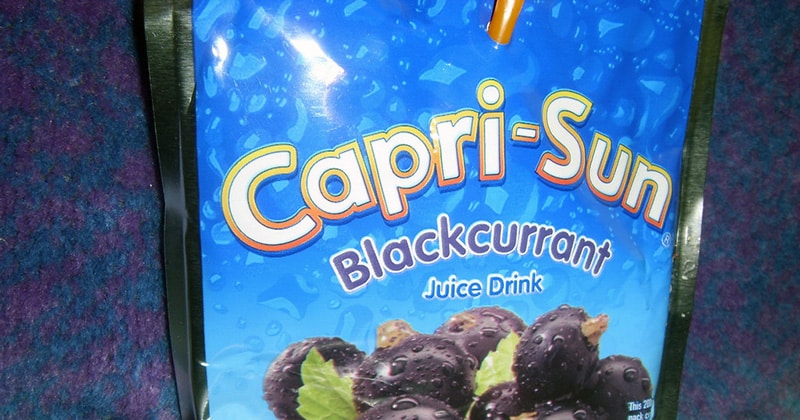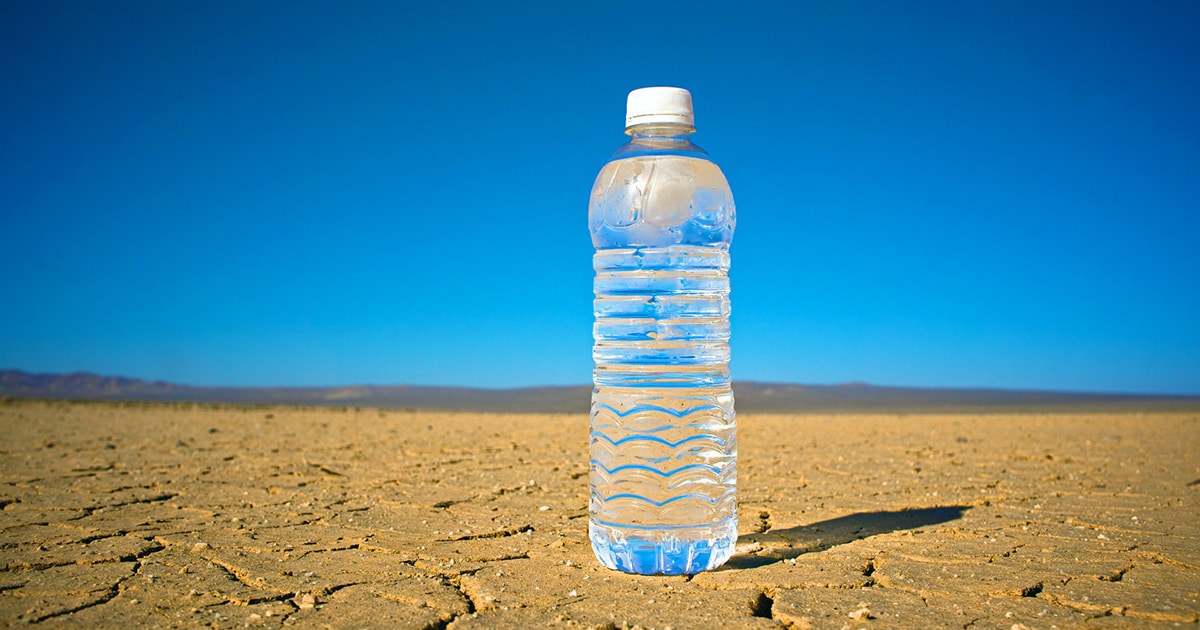When I was a kid, Kool-Aid, Tang, and Hi-C juice boxes were the norm for kids’ beverages. You were super cool if you had Capri-Sun, water was boring, and tea was for grown-ups.
Clearly, things have changed.
Nowadays, teenagers proudly tote tea-based beverages. Bottled water is a blank canvas for those trendy flavoured squirtables and stick-packs. Coconut water, maple water, and even cactus water continue to gain popularity. Classic sports drinks like Gatorade are continuously evolving to stay relevant.
This is both amusing and confusing for parents who want to keep their children hydrated and healthy, but who had far fewer options and health-based marketing messages to deal with as kids themselves.
How to Balance Health, Hydration and Taste

The bottom line for parents is that kids often want something that tastes good (and, if possible, makes them feel cool like Capri-Sun did for us). They’re likely far less influenced by healthy trends or sports nutrition and more by the example you set.
You may urge them to drink water, the #1 go-to, but it doesn’t always work. So how do you strike a balance between health, hydration, and taste?
Let’s focus on three scenarios with three different kids: the sick kid, the sports kid, and the everyday kid. Each situation has its own challenges, which I’ll address below.
Scenario #1: When Your Kid is Sick
When your kid is vomiting or has diarrhoea, they’re losing vital nutrients, electrolytes, and water. It’s essential to remember that kids lose different proportions of nutrients through vomit and diarrhoea compared to sweat.
Hydration drinks like Pedialyte and sports drinks like Gatorade or Powerade are popular for rehydration during gastrointestinal distress, especially Gatorade because of its flavour variety and lighter texture, which adults often find more palatable.
But in cases of severe illness, Pedialyte is the better option. It’s specifically designed to replace the nutrients lost through vomiting and diarrhoea. Pedialyte’s nutrient levels meet the American Academy of Pediatrics’ guidelines for rehydration in infants and children.
To explain: one study found that Gatorade worked as well as Pedialyte for mild dehydration, but the Gatorade group had a lingering potassium deficiency after treatment. Low potassium can be dangerous for dehydrated children, leading to weakness, muscle cramps, and even abnormal heart rhythms.
Breaking down the nutrient components: one serving of Gatorade G2 Fierce Grape has 7 grams of sugar (from sugar and dextrose), 160 mg sodium, and 45 mg potassium. Pedialyte Strawberry has 6 grams of dextrose, 240 mg sodium, 180 mg potassium, and 10% of the recommended daily intake (RDA) of zinc. Pedialyte has at least twice the potassium, and Gatorade lacks zinc altogether.
One Gatorade study did confirm what thousands of parents and hungover college students already know – sick kids much prefer the taste of Gatorade to Pedialyte. That’s likely biased but I can’t argue with it, because I’ve had both… and… yuck.
Although Gatorade is generally preferred for taste, Pedialyte is a better option for dehydration caused by illness. Sugary drinks or juices can worsen diarrhoea by drawing water into the intestines. Pedialyte’s frozen pops can also be a good alternative if the texture is more appealing.
As always, consult your child’s physician if they’re unwell. Hydration needs vary depending on illness severity and your child’s age, height, and weight, so it’s important to seek professional guidance.
Scenario #2: When Your Kid Plays Sports
For light activity lasting under an hour or moderate activity under 30 minutes, AAP guidelines state water is enough. However, for moderately strenuous activity lasting over an hour or high-intensity activity for 30 minutes, a sports drink may be better.
Sports drinks offer three key benefits:
- They taste good, so your kid is more likely to drink them and avoid dehydration.
- They replace electrolytes lost through sweat.
- A sports beverage can provide the body with instant fuel when sipped during activity.
These benefits are only applicable during physical activity and if the activity is strenuous enough (an idea of what that means can be found here). If your toddler is wandering the soccer field for 20 minutes, water should suffice.
Is coconut water a good option?
Some parents ask about coconut water. While it’s a healthy option, check the labels first. Some brands contain added sugar, often more than sports drinks, and some have very low sodium, which needs to be replenished after strenuous activity.
Coconut water’s high potassium content can also be a taste barrier for some kids. There’s no point in choosing a “healthier” option if your kids won’t drink it.
Scenario #3: When Packing Their Lunch
For an average day, water is the best option for your kid’s lunch. But if they need some flavour motivation, consider water add-ins like Mio or Crystal Light. These can make water more appealing, and many are lower-calorie, lower-sugar options than fruit juice.
Make sure these add-ins are caffeine-free, and remember that “No Sugar Added” doesn’t necessarily mean low-sugar. For younger kids, prepare the water mixes ahead of time to avoid them consuming the powder directly.
For older kids, green tea is a better option than soda or energy drinks, as it provides health benefits and contains less caffeine. Remember that kids under 18 can have up to 100 mg caffeine per day. However, be cautious of sugary tea-based drinks, which may seem healthier than they are. Always check the sugar content and ensure that tea is one of the main ingredients.
The other watch out here is that it’s important to talk to your kid about limiting caffeine intake. TRUST ME when I say this conversation is as important as the one about the birds and bees, as caffeine intake awareness may save their life one day!
Red Bull and V8 V-fusion + Energy both have 80 mg caffeine per 8 ounce can, but the caffeine from the V8 comes from green tea. That means the V8 is a better option, but too much caffeine is still too much caffeine, no matter where it comes from — even if it’s green tea!
FAQs
Does Capri-Sun hydrate you?
Capri-Sun can hydrate, but its high sugar content makes water a better option for hydration.
Does Capri-Sun have caffeine?
No, Capri-Sun does not contain caffeine.
Does Capri-Sun have electrolytes?
No, Capri-Sun does not have significant electrolytes like sports drinks.
Kool-Aid vs Capri-Sun
Both drinks are sugary and not ideal for hydration. Capri-Sun has less sugar than Kool-Aid but is still not the healthiest option.
Does Kool-Aid hydrate you?
Kool-Aid contains water but is high in sugar, making it less effective for hydration compared to plain water.
Is Kool-Aid hydrating?
It provides some hydration, but the high sugar content may contribute to dehydration if consumed in large amounts.
Is Hi-C healthy?
Hi-C is not considered healthy due to its high sugar content and lack of essential nutrients.
Is Gatorade good for kids?
Gatorade can be helpful for kids during intense physical activity, but water is generally a better choice for everyday hydration due to its sugar content.
Is Gatorade for kids?
Gatorade is suitable for kids during extended physical activity but should be limited in regular situations because of its high sugar content.
Can toddlers drink Gatorade Zero?
Yes, toddlers can drink Gatorade Zero in small amounts, but regular consumption should be avoided due to the unknown long-term effects of artificial sweeteners.
Can you give a 1-year-old Gatorade?
It’s best to consult a pediatrician before giving Gatorade to a 1-year-old. Water or Pedialyte is typically preferred for hydration in toddlers.
Pedialyte vs Gatorade for toddlers
Pedialyte is a better option for toddlers, especially when they need electrolyte replenishment due to illness. Gatorade contains more sugar and is designed for older children and athletes.
Is Gatorade OK for kids?
Gatorade is fine for kids in moderation, particularly during physical activity, but it shouldn’t replace water for regular hydration.
The Bottom Line
The effects of dehydration can range from tiredness and fewer wet nappies to more severe issues like fussiness, fever, and low blood pressure. Younger kids may not understand thirst well. So, speaking to their physician about warning signs and symptoms is key to learning how to gauge dehydration in your own child.
No single hydration solution fits every situation. The key is finding what your child likes while meeting their actual hydration needs. Healthy options only work if your kids drink them.

